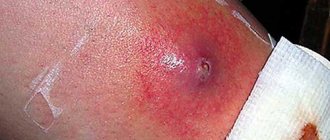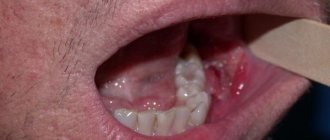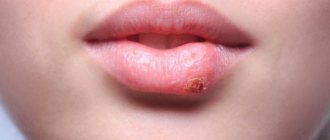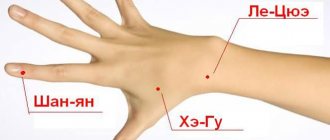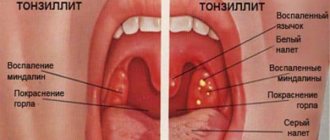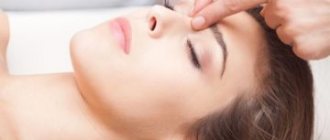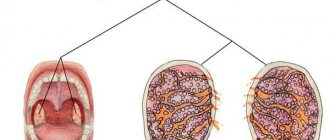The drug “Inhalipt” has found widespread use for stomatitis. Its components act in the fight against microbes and prevent their further spread to nearby healthy areas. “Inhalipt” for stomatitis effectively neutralizes the foci of the disease and brings it into a state of stable remission. In the process of treating an inflammatory process in the oral cavity with the drug "Inhalipt", it is necessary to take into account contraindications to it and possible side effects.
"Ingalipt" is an effective remedy for the treatment of oral ulcers.
Oxolinic ointment
The most affordable ointments for stomatitis are oxolinic. These are broad-spectrum antiviral drugs based on the substance of the same name.
The product is used externally only. In dentistry, 3% gel is used. It is effective against the herpes virus. Therefore, it is most often prescribed for herpetic stomatitis.
Important! Oxolinic ointment should not be used by children and is undesirable for pregnant and lactating women.
Broad-spectrum antiviral agent.
The drug is applied to the affected areas three times a day. The course of treatment is from 2 to 8 weeks. Oxolin is one of the cheapest medicines. Its cost is 20 – 35 rubles per tube of 10 g.
"Acyclovir"
Another drug prescribed for the treatment of herpetic stomatitis. Effective against herpes viruses, chickenpox, shingles, Epstein-Barr and cytomegalovirus. Penetrates the cells of pathogenic cells and destroys them by blocking the synthesis of the DNA chain.
For stomatitis, the ointment should be applied in a thin layer to the affected areas twice a day. The course of treatment is at least 5, maximum 10 days.
Additional Information! The effect of the medication can be enhanced if you take immunostimulating drugs at the same time. To achieve maximum results, treatment should begin as early as possible.
Effective in the treatment of herpetic stomatitis.
Acyclovir should not be prescribed during pregnancy, lactation, or if you are allergic to any of the components. Possible rashes, itching, burning, swelling.
What can cause stomatitis in a child?
To date, experts have compiled a fairly impressive list of provoking factors, the influence of which can play a decisive role in the development of stomatitis in a child. As a rule, the causative agents of the disease are herpes viruses, microorganisms of the genus Candida, as well as streptococcal and staphylococcal bacteria1.
However, this is far from a complete list of potential causes of the appearance of characteristic ulcers on the baby’s oral mucosa. The lesion can be triggered by soft tissue injury resulting from malocclusion, an incorrectly installed crown, or wearing a brace system. Also, the disease can develop as a result of taking certain medications, severe dehydration or hypothermia, stress, hormonal imbalances, lack of healthy vitamins and microelements in the diet, a sharp decrease in immunity and, of course, low level of oral hygiene - the most common cause of practical all dental diseases.
Ulcers on the oral mucosa cause incredible discomfort
On a note! Stomatitis occurs as a result of the activity of certain viruses, bacteria or fungi in the oral cavity. But the provoking factor, as a rule, is trauma to the mucous membrane and a decrease in the body’s immunity.
"Metrogil Denta"
Ointment based on metronidazole and chlorhexidine. For use in dentistry only. Suppresses the activity of aerobic and anaerobic bacteria that provoke periodontal diseases.
Typically, Metrogyl Denta is prescribed for the treatment of aphthous stomatitis. It reduces inflammation and pain, has a detrimental effect on pathogenic microorganisms. For other types, it is recommended as complex therapy.
Additional Information! The drug has a wide spectrum of action. It is also used for gingivitis, periodontitis, periodontal disease, abscess, cheilitis, alveolitis.
According to the instructions for use of Metrogilom Dent, you need to lubricate the aphthae twice a day for 7 to 10 days. The medicine must not be used:
- children under 6 years old;
- during the 1st trimester of pregnancy;
- during lactation - when it is necessary to use the gel, breastfeeding is canceled for the duration of therapy;
- if the patient is intolerant to the components.
Ointment based on metronidazole and chlorhexidine.
Sometimes the product causes allergic reactions and headaches.
The medicine is produced in tubes of 5, 10 and 20 g. The price of Metrogil Denta is 200-250 rubles.
What does “inhalipt” consist of?
The main active ingredient in the medication is streptocide. It acts as the main fighter against bacteria and a powerful healing agent in the medicine. To help him, glycerin has been added, which removes plaque of pus from the mucous membrane affected by the disease. Antiseptics in Inhalipt are essential oils of thymol, eucalyptus and mint.
They help relieve pain and soothe the affected mucous membrane. All components harmoniously complement and enhance each other's effects. Alcohol, water and sugar are added to the medicine as additional components. "Inhalipt" is produced only in liquid form.
The light yellow medicine is in a dark, opaque bottle and comes complete with a nebulizer.
The spray form is convenient for application. It allows the drug to quickly reach the mucous membrane and immediately act directly on the sites of infection. The use of Ingalipt allows you to speed up the healing process several times compared to other drugs for stomatitis that need to be used to treat wounds.
We suggest you read: Is it possible to drink alcohol before tooth extraction?
"Solcoseryl"
The main purpose of Solcoseryl is to accelerate regenerative processes. He is capable of:
- activate cell division and growth;
- normalize oxygen supply to tissues and cellular respiration;
- restore blood supply;
- improve oxygen transport to cells;
- accelerate the restoration of mucous membranes and skin.
Important! "Solcoseryl" is available in 3 forms: gel, cream and dental paste. The last two are recommended for use in the treatment of stomatitis, since the gel does not contain fat and is easily washed off with saliva. It is advisable to first brush your teeth and rinse your mouth with a disinfectant solution.
Solcoseryl is used as follows:
- dry the mucous membrane with a sponge;
- apply a strip of paste 0.5 cm thick to the affected surface;
- The product is lightly moistened with a damp cotton swab without rubbing.
Stimulates the restoration of mucous membranes and skin.
You should use the paste every time after meals and before bed until symptoms disappear. It is advisable not to eat or drink for half an hour after application. The product forms a protective shell on the surface of the mucosa, which lasts 3 to 5 hours.
The paste should not be prescribed to pregnant women, nursing mothers and children under 18 years of age. The cost ranges from 370 to 450 rubles.
Side effects
The following side effects are observed when using Inhalipt:
- local and/or general allergic reaction to the components of the drug in the form of angioedema, skin rashes, itching, etc. (symptoms are relieved by antihistamines, including Claritin, Erius);
- nausea (in some cases accompanied by vomiting);
- burning, sore throat;
- disturbance of taste sensations.
Inhalipt can cause diarrhea, rapid heartbeat, general weakness, constant drowsiness, headache, bleeding gums, infectious and inflammatory complications, and gastrointestinal bleeding. In young children, essential oils can cause reflex bronchospasm.
Side effects are caused by ignoring the doctor’s recommendations, non-compliance with the rules for taking and dosing the drug, self-medication, especially without carefully studying the instructions. They are also caused by the individual characteristics of the body. Therapy with Ingalipt in such cases is immediately stopped.
If any symptoms make themselves felt immediately after using the medicine, they can be weakened or even eliminated by rinsing your mouth with plenty of warm water. If the spray gets into your eyes, they should be rinsed thoroughly with the same warm water. Then you need to consult a doctor, choose another drug and treat the ailments that have manifested themselves.
"Tetracycline"
Antibiotic based balm. Produced in the form of a 3% ointment. Available without a prescription. You can buy it for 30 – 60 rubles.
Has antimicrobial and anti-inflammatory properties. In dentistry it is inferior in effectiveness to other means. But it works well for bacterial stomatitis.
Important! Tetracycline inhibits the activity of many types of bacteria. However, most viruses and fungi are resistant to it.
Apply the drug twice a day - morning and evening. Before use, brush your teeth and rinse your mouth with an antiseptic solution. Afterwards it is not advisable to eat, drink or smoke.
"Tetracycline" is prohibited for:
- pregnant women;
- nursing mothers;
- children under 8 years old;
- patients with liver failure, gastric ulcers, leukopenia;
- people who take penicillin antibiotics.
Effective in fighting bacterial infection.
"Holisal"
"Cholisal" is traditionally considered a remedy for easing teething. However, it is also effective against:
- stomatitis of any etiology;
- periodontitis;
- gingivitis;
- cheilitis;
- periodontal disease;
- candidiasis.
The drug consists of 2 main active ingredients: choline salicylate and cetalkonium chloride. The first relieves pain, reduces the activity of macrophages and neutrophils, and can fight fungi in an acidic environment. The second is a powerful antiseptic that has a detrimental effect on gram-positive and gram-negative microorganisms.
The product is quickly absorbed into tissues, but practically does not penetrate into the bloodstream. It is applied in a thin layer 15 - 20 before meals three times a day. For adults, a strip of 1 cm is required, for children over 1 year old - 5 mm.
It is quickly absorbed into tissues, but practically does not penetrate into the bloodstream.
The price for "Cholisal" in Russian pharmacies is 320 - 400 rubles.
Contraindications to the use of the drug
Inhalipt has a meager number of contraindications for use. These are:
- age up to 3 years;
- intolerance to any of the components;
- history of allergies to sulfonamides or essential oils.
At the same time, it should be noted that such a small amount of the drug is absorbed in the oral cavity that it minimally affects the body’s metabolic processes, and therefore is generally hypoallergenic.
Age restrictions are associated with the high sensitivity of the infant body, both to aerosols and to drug components. Inhalipt, when it gets on the delicate mucous membrane of the oral cavity, can cause a burning sensation. The same thing happens in the esophagus if the drug enters there.
Nystatin ointment
Nystatin ointment is used for fungal stomatitis in the mouth. This is a drug based on a polyene antibiotic. Effective against fungi of the genus Candida.
The medication is applied twice a day in a thin layer to areas of erosion and ulceration. On average, the course of treatment lasts 7–10 days. However, according to indications, it can be extended to 4 weeks.
It is prohibited to prescribe Nystatin:
- children under 1 year old;
- during pregnancy;
- for allergies to the composition of the ointment, ulcers, liver failure.
Important! Nystatin is safe if swallowed. It is not absorbed and is excreted unchanged along with feces.
Used in the treatment of fungal stomatitis.
The medicine is cheap. You can buy it for 40 – 60 rubles.
Levomekol in dentistry - can it be smeared in the mouth for stomatitis?
Levomekol ointment should be in any home medicine cabinet. Among doctors, it has gained a reputation as a good healing agent that accelerates the restoration of skin tissue and mucous membranes.
Levomekol is widely used in surgery for the treatment of purulent wounds of varying depth and complexity; it is prescribed for the treatment of sutures after surgery, to restore the integrity of the skin structure.
In dentistry, the ointment has found application due to its rapid, successful therapeutic effect and relatively inexpensive price; it is used when inflammatory processes and open wounds appear in the mouth, for example, in the hole at the site of an extracted tooth.
Levomekol - description of the drug and release form
The composition of 1.0 g of Levomekol ointment includes chloramphenicol 7.5 mg, methyluracil 40 mg, and is based on polyethylene oxide 1500 and polyethylene oxide 400.
Chloramphenicol is a general antibiotic, methyluracil is a drug that increases tissue trophism and stimulates the recovery process.
The combination of these components makes the wound healing process quick and successful. Levomekol reliably protects the damaged area from infection and at the same time has a healing effect.
The ointment is available in metal tubes of various volumes (25g, 30g and 40g) or in large glass jars that do not transmit light (100g and 1000g each). The structure of the product is homogeneous and of medium thickness, the smell is not pronounced.
The drug belongs to a combination of drugs, as it combines the properties of antibiotics, anti-inflammatory components and accelerates cell renewal.
It should be remembered that prolonged regular use of the drug, for example, when fighting acne, can cause pathogenic microorganisms to become addicted to the antibiotic over time, but this process takes place over a long period.
Methyluracil, one of the active ingredients of Levomekol, has the beneficial property of quickly penetrating through the surface layers of the skin, it accelerates cell renewal and helps to quickly cleanse and heal wounds, cuts, scratches and stitches after surgery. In addition, it promotes the production of natural interferon, which is responsible for local immunity and significantly increases the body's resistance to infections.
The auxiliary components included in Levomekol help the active substances work, promote the rapid penetration of the medication into the upper layers of the skin, without injuring the affected areas.
Additional substances have a powerful anti-edematous effect, disinfect and create a protective layer that prevents further infection of open wounds; in addition, there is a general therapeutic effect.
The beneficial effect of Levomekol is not reduced due to the presence of pus and dead epidermal cells in the wound.
Indications in dentistry
Among dentists, Levomekol ointment has found wide use due to its effectiveness in the treatment of festering and inflamed wounds in the mouth. It is prescribed for:
- ulcers inside the mouth,
- stomatitis in children and adults,
- inflammation of the gums,
- periodontal disease and periodontitis.
During surgical operations of the oral cavity, the ointment is prescribed after the procedure of implantation or removal of a diseased tooth; it effectively relieves pain and reduces swelling of the damaged tissue.
A bandage well soaked in the product is placed into the hole of the extracted tooth, and then changed as it becomes saturated with pus; several changes of the tampon may be required per day. The course of treatment does not need to be completed when the symptoms are alleviated, but completed for at least 5 days.
Since the ointment cannot enter the human body along with saliva, you should carefully follow the instructions and use Levomekol after meals or at least 40 minutes before meals.
Instructions for use of ointment
The ointment is used exclusively externally. It is applied in a thin, even layer to the injured area, and then the skin is covered with bandages or gauze folded in 3-4 layers.
Several times a day, the bandage must be removed and the wound treated again, and then the bandage must be replaced with a new one.
Treatment should last at least 5 and up to 10 days, depending on the complexity of the tissue damage; at the end of the course, the wound should be completely cleansed of pus and dead skin particles.
If the injury is too deep or located where it is impossible to apply a bandage, for example, in the oral cavity, then in this case tampons with ointment made from bandages or gauze are used.
Before treatment, the ointment must be warmed to body temperature so that the inflamed or injured gum does not experience additional irritating and painful effects, then soak the tampon generously with it and carefully immerse it in the wound until it is completely filled.
A wound that, due to its size, shape, or other reason, does not allow a tampon to be inserted into it, is filled with ointment using a catheter and then covered with a bandage. It must be changed as it becomes filled with pus and particles of dead skin tissue.
In a normal, uncomplicated course of the disease, the dressing can be changed no more than once a day, and if the infection provokes severe discharge of pus, up to 5-6 dressings per day may be required.
If the dressing was skipped for some reason, you need to continue treatment according to the old scheme and observe the frequency of changing napkins and bandages as before.
Levomekol is prescribed not only for deep injuries to the skin and mucous membranes, it successfully treats small and large pimples, torn calluses, household cuts, bites and scratches caused by pets. For bedridden patients, who often develop bedsores from an immobile lifestyle, doctors prescribe skin treatment with ointment.
The drug is prescribed for painful processes in the oral cavity, for example, after tooth extraction or for the treatment of ulcers due to stomatitis.
In case of inflammation of the ear canal, a thin soft flagellum is twisted from gauze or bandage and placed in the ear with light movements without effort for 12 hours, in a similar way, the mother is used in the treatment of sinusitis, then the flagellum is immersed in the nasal sinuses.
To treat pimples, treatment is carried out at night, and after the purulent capsule bursts, the procedure should be repeated.
When treating with Levomekol, it is not recommended to simultaneously use several products with different active ingredients; you should not combine it with other ointments.
Contact with eyes should be monitored, but if this occurs, rinse immediately with plenty of water.
If the drug gets inside the stomach, it must be rinsed with water and activated carbon, and if after this general symptoms of poisoning appear - nausea, vomiting, abdominal pain, you should immediately consult a doctor.
Features of use for stomatitis in children and adults
Levomekol is known in pharmaceuticals as a very effective remedy for combating stomatitis in children and adults. Externally, it appears as white sores in the mouth - on the gums, the inside of the lips, and on the cheeks. Stomatitis is considered a relatively minor disease, but you should see a dentist, as ulcers can be caused by serious diseases.
The dentist must determine what exactly causes the appearance of stomatitis; for this, appropriate tests are taken, including scrapings from the mucous membrane. Based on the tests, one or another remedy should be prescribed.
Levomekol effectively eliminates the bacterial type of stomatitis caused by the action of pathogens.
The product is a good antibiotic; it eliminates the cause of the disease, in addition, it promotes wound healing and renewal of the oral mucosa:
- Before starting treatment, your mouth needs to be treated: rinse it with an antiseptic solution or a decoction of the treated herb, best of all, chamomile,
- treatment with ointment is carried out after eating or on an empty stomach, in which case you will need to wait at least 40 minutes before eating,
- ulcers are smeared with Levomekol using a gauze pad.
The decision to use Levomekol as a remedy for stomatitis for children should be made by a dentist; however, for children under one year of age, the ointment, like most medications for adults, is contraindicated. Under no circumstances should you self-medicate, since stomatitis may hide a dangerous disease in which the ointment will be ineffective.


